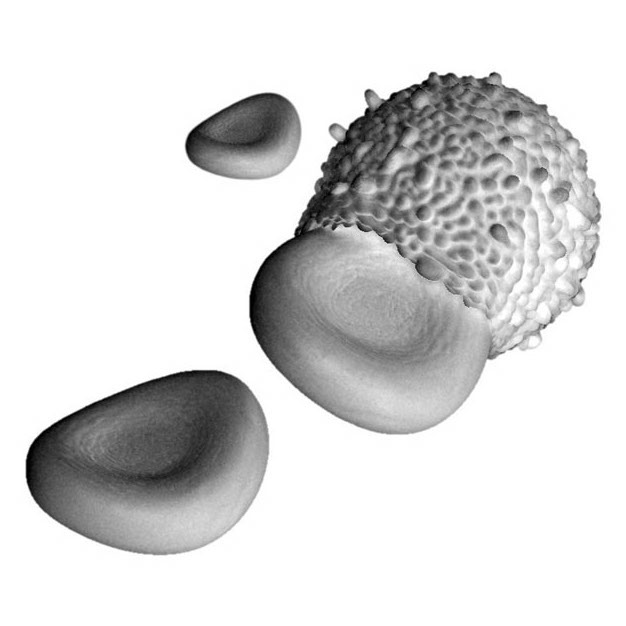What we work on
We research the role of phagocytosis in microparticle drug delivery.
Sometimes phagocytosis is useful to microparticle drugs and sometimes a hindrance.
Microparticles and phagocytosis
Microparticles are useful for carrying drugs, but are often identified as foreign by our immune systems and engulfed via phagocytosis. Whether this is a bad thing or not depends on how the drug works:
- Most microparticle drugs want to avoid phagocytosis since, once they are inside immune cells, they are destroyed and cannot do their job
- However, some microparticle drugs actually want to be phagocytosed since they are then transported inside the immune cell to where they want to go
So to develop microparticle drugs we need to understand exactly how phagocytosis works, both to suppress it for some drugs and to encourage it for others.

Shape and size

One interesting aspect of phagocytosis is that how well a particle can be eaten depends enormously on both the particle's size and its shape. For example, particles that are too big or too small are not easy to phagocytose.
We work on understanding exactly how size and shape affect both whether phagocytosis is possible and how quickly it happens. In particular we look at:
- Which size particle is quickest to be phagocytosed
- Which shapes do cells find the easiest to phagocytose
- And which shapes do they find the hardest
For example, if we can identify a shape that cells find very hard to phagocytose, then perhaps microparticle drugs shaped like this would be able to avoid phagocytosis within the body.
Target orientation
Shape and size are not the only factors that affect phagocytosis. One other important factor is the orientation that a particle first touches an immune cell.
For example, it is known that rugby-shaped particles are phagocytosed easiest if one of the pointed ends touches the cell surface first. Conversely, if they touch the cell first on their side (as if they were lying down) then phagocytosis is much harder and sometimes cannot happen at all.
Our work looks at which orientation leads to the quickest (and slowest) phagocytosis and how this relates to the particle shape.

Other research

Phagocytosis is a fascinating topic and there are many more questions that we work on. These include:
- How do some bacteria make it difficult for immune cells to phagocytose them?
- Which forces inside the cell are responsible for pushing the cell around the target particle during phagocytosis?
- What goes wrong in some diseases where normal phagocytosis cannot happen?
- What happens to a particle once it is inside an immune cell? Where does it go next and how long does it take to degrade?